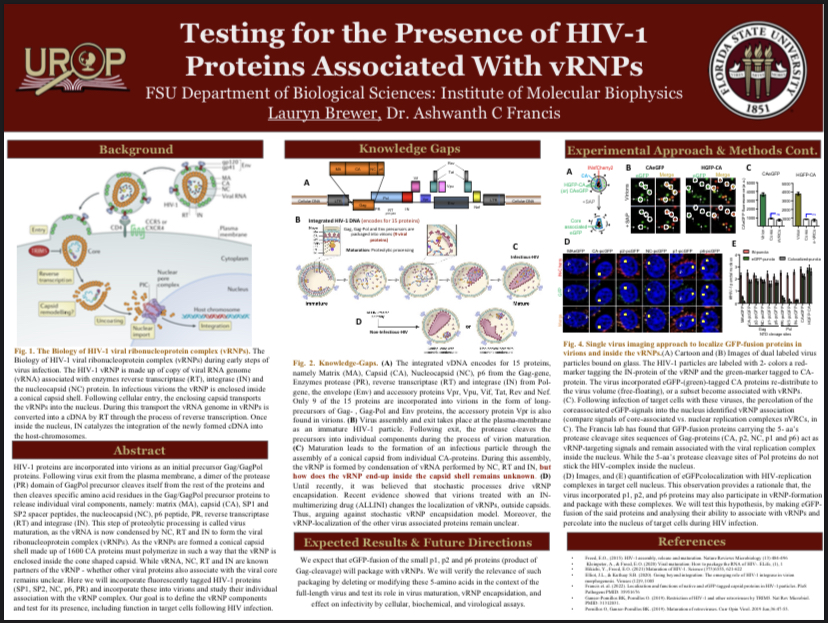Research Symposium
23rd annual Undergraduate Research Symposium, April 6, 2023
Lauryn Brewer Poster Session 2: 1:30 pm - 2:30 pm/ Poster #253
BIO
Hi, my name is Lauryn, I am a sophomore on the pre-medical track. I joined UROP to break into undergraduate research and try something new. I am also involved with AMWA, HerCampus, and MRU and will be a UROP Leader next semester!
Testing for the Presence of HIV-1 Proteins Associated With vRNPs
Authors: Lauryn Brewer, Dr. Ashwanth C FrancisStudent Major: Clinical Professions
Mentor: Dr. Ashwanth C Francis
Mentor's Department: Molecular Biophysics Mentor's College: Biological Sciences Co-Presenters:
Abstract
HIV-1 proteins are incorporated into virions as an initial precursor of Gag/GagPol proteins. Following virus exit from the plasma membrane, a dimer of the protease (PR) domain of GagPol precursor cleaves itself from the rest of the proteins and then cleaves specific amino acid residues in the Gag/GagPol precursor proteins to release individual viral components, namely: matrix (MA), capsid (CA), SP1 and SP2 spacer peptides, the nucleocapsid (NC), p6 peptide, PR, reverse transcriptase (RT) and integrase (IN). This step of proteolytic processing is called virus maturation, as the vRNA is now condensed by NC, RT, and IN to form the viral ribonucleoprotein complex (vRNPs). As the vRNPs are formed a conical capsid shell made up of 1600 CA proteins must polymerize in such a way that the vRNP is enclosed inside the cone-shaped capsid. While vRNA, NC, RT, and IN are known partners of the vRNP - whether other viral proteins also associate with the viral core remains unclear. Here we will incorporate fluorescently tagged HIV-1 proteins (SP1, SP2, NC, p6, PR) and incorporate these into virions and study their individual association with the vRNP complex. Our goal is to define the vRNP components and test for its presence, including function in target cells following HIV infection.
Keywords: Virus, HIV, Proteins,


